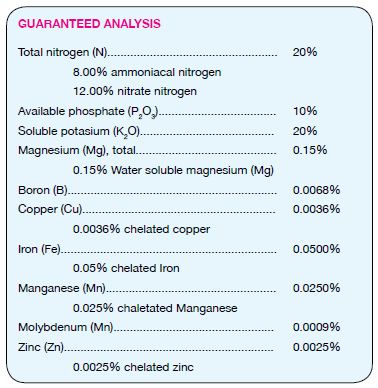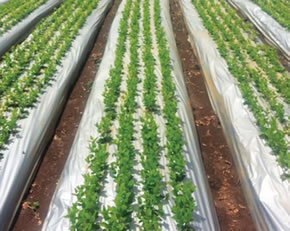Featured Past Articles
Linking Retail And Wholesale Consumer Markets Globally
 Dutch Flower Group Africa is all about linking Retail and Wholesale consumer markets, all over the Globe,with flower growers in Africa.Being the supply chain partner for overseas DFG companies, the Nairobi based DFG Africa organisation aims to develop long term sustainable relationships in the chain and fosters transparent partnership with growers.
Dutch Flower Group Africa is all about linking Retail and Wholesale consumer markets, all over the Globe,with flower growers in Africa.Being the supply chain partner for overseas DFG companies, the Nairobi based DFG Africa organisation aims to develop long term sustainable relationships in the chain and fosters transparent partnership with growers.
DFG Africa facilitates the process of supplying the best possible flower product to the consumer, and the DFG companies use our local presence to cooperate with the growers in Africa, so to make use of each other’s best practices and fulfill the needs and requirements of the customers abroad.
Our Philosophy and Model is managed by an experienced, focused, well trained team of professionals - covering areas of Supply Chain, Consumables and Technical Support, so to ensure that fresh flower products from Africa are delivered on time against contract specifications agreed.
DFG Africa stands for:
The pH of a growing medium is influenced by several different factors, two of which have been addressed in previous articles: the alkalinity of the irrigation water, as well as the amount and form of limestone incorporated into the growing medium. This article will focus on the third major factor: nitrogen. by JoAnn Peery
In standard greenhouse fertilizers, nitrogen is supplied as ammonium (NH4+), nitrate (NO3-) or urea. Each of these three nitrogen sources, when taken up by plant roots, produce different chemical reactions with differing effects on the growing medium pH. This article will briefly describe those effects on growing medium pH.
Ammoniacal Nitrogen (Ammonium): When ammoniacal nitrogen (NH4+) is taken up by the plant, it is converted to ammonia (NH3) within the root. This process results in the release of a positively charged H+ cation from the plant root. The H+ cation then reacts with the growing medium causing a reduction in its pH. The higher the concentration of ammoniacal nitrogen in the fertilizer, the greater the impact it has on lowering the growing medium pH.
Ammoniacal nitrogen can also become available to the plant through a process called nitrification. In this process, microbes in the growing medium breakdown ammoniacal nitrogen, thus releasing the H+ and resulting in a reduced growing medium pH. This process occurs most efficiently when the growing medium temperature is above 50°F (10°C) and the microbes are most active. Since nitrification needs warmth for the microbes to actively break down the ammoniacal nitrogen, it is generally not recommended as the primary nitrogen source during cool winter months. It should also be pointed out that plants grown with high levels of ammoniacal nitrogen, especially when growing medium temperatures are cold, can show ammonia toxicity, causing chlorosis and necrotic spotting of older leaves.
Nitrate Nitrogen: Nitrate nitrogen works differently by causing the release a negatively charged OH- or HCO3- anion when it is taken up by the plant root. These negatively charged anions are bases and when they react with the growing medium, they cause the growing medium pH to increase. If the fertilizer used has a high concentration of nitrate nitrogen, then it will have a greater influence on increasing the pH of the growing medium.
Urea: Urea nitrogen ((NH2)2CO), the third nitrogen source, is often broken down by microbes in the growing medium to form NH4+ (ammonium) and CO2- (carbon dioxide). As stated above, when a plant roots takes up ammoniacal nitrogen, it emits H+ into the growing medium, thereby reducing the pH of the growing medium. However there is significant evidence that shows plants roots take up some urea, which has no electrical charge. Therefore, urea is considered neutral and therefore does not have an impact on growing media pH.
Plants often can only take up nitrogen in the form of ammonium or nitrate. Organic fertilizers must be broken down to one of these two forms by microbial activity in the growing medium before being taken up by the plant root. Therefore the effect of organic fertilizers on growing medium pH will depend on how the organic component of the fertilizer is broken down. However, most organic fertilizers break down to the ammoniacal form of nitrogen and therefore will cause a drop in growing medium pH.
Other than nitrification, the impact of nitrogen form on growing medium pH only occurs when the plants take up the nitrogen. If plants are very small or not growing, the plant uses little fertilizer and therefore the growing medium pH will not be affected by the addition of fertilizer.
Understanding the function of nitrogen form on growing medium pH is an additional tool in a grower’s arsenal for optimizing nutrient availability. Combined with knowledge of the alkalinity of the irrigation water, a grower can choose the fertilizer formulation that will maximize plant growth. As a general rule of thumb, growing medium pH can be controlled through the choice of nitrogen form as long as the alkalinity of the irrigation water does not exceed 235 ppm CaCO3. Once it rises above 235 ppm CaCO3 the amount of acid needed to maintain a desirable growing medium pH can no longer be provided by fertilizer source alone and acid injection is recommended.
In order to maintain optimum growing medium pH and nutrient availability, growers should test the growing medium pH of various crops on a regular basis. By monitoring growing medium pH, slight modifications in fertilizer applications can be made before nutrient problems are manifested in plant growth.

All farming endeavours are by definition somewhat risky. Since the beginning of civilization, farmers have had to deal with adversity. Bad weather conditions, poor soil, inadequate water supplies, soil borne plant diseases, transportation complication, cut throat competition etc. Hydroponics helps to overcome some of these barricades to successful farming. By proper management, you provide the crop adequate mineral nutrients and oxygen as well as a reliable water supply to promote strong growth. Such vibrant plants are much more resistant to insect infestation and disease.
According to a research carried by Naomi Chelimo in Van Den Berg, Naivasha, hydroponics saves on water, fertilizer while ensuring better quality and quantity of roses. Worth mentioning are 56% less Water, 44% lower fertilizer costs, 41% more stems, 65% more production in stems of weight and 20% longer stems.
Commutatively, the grower will get 43% higher turnover. Though this will increase the cost of capitalization, but based on these results the payback period for the additional investment cost (calculated excluding costs of financing) is within the second year for a 6 ha production area.
“I wish I was a newspaper so I could be in your hands all day,” Biheshimiwa alias digital Lady fumed as she approached the sitting room. Without mincing words or turning my eyes from the obituaries page I was reading, I fired back, “I too wish that you were a newspaper so that I would have a different one every day.” This opened a canon of unprintable, which she vomited into my face and left me lying on the sofa set like a deflated condom. Unknowingly, all this had been caused by a brief assignment given to me by boss.
Earlier in the day, the editorial board had met. They went through all CVs in our third rate media house looking for someone to undertake a mission impossible. On my CV they read; Dr.(Debtor) Officer, BSC, (Bachelor of Stoning Cars) MPC (Mad People’s Combination) UON (University of Nowhere) MBA (Masters in Anything) Havard University, PHD, (Permanent Head Damage) in Laughtology, EKB (Elder of the Kitchen Budget), ETC (End of Thinking Capacity) Esquire. The CV was quite impressive to them and my boss to call me immediately.
Read more: Bayer CropScience Launches a Chemical Weapon of Mass Destruction
By Silah Koech
Hiiii...every one there, here are a few tip’s on management and control of Downy mildew before the start of Elnino rainfall.
Use good quality plant and seed material with history of low disease incidence, selecting varieties with genetic resistance against the disease. Inspect new arrivals and reject or quarantine if in doubt.
Scout routinely (at least 2-3 times weekly) to identify diseased plants before the epidemic strike. Turn the leaves over to check for spatulation on the undersides of the leaves.
Reduce humidity by increasing plant spacing and air flow; avoid overhead irrigation, but if used, apply early in the day to allow for drying of the leaves by the afternoon if necessary check inside and outside temperature for catain management (Best known as manipulating the environment).
Do not hold plants between crop cycles; remove plant debris, hygiene is very very Paramount.
Chemicals for Downy mildew are available in the market. Chemical application should be considered preventative since once these diseases get started, curative action can rarely be achieved.
It’s my take that with those few tips somebody somewhere within Eldoret and it’s environs will agree with me. Ahsanteni.
 The two certification standards for flowers and plants agree cooperation. MPS and GLOBALG.A.P. have announced their agreement to work together and offer a synchronized certification solution for the horticultural sector.
The two certification standards for flowers and plants agree cooperation. MPS and GLOBALG.A.P. have announced their agreement to work together and offer a synchronized certification solution for the horticultural sector.
The partnership will combine the MPS-ABC system with the GLOBALG.A.P. certification standard. Growers will be offered a onestop solution: two certificates with a single audit, with the additional benefit of having access to the MPS-GAP Brand when these assessments are also combined with GRASP.
“Our aim is to offer a single point of entry for growers and their retail customers to demonstrate their progress towards sustainability”, said Theo de Groot, Director of MPS, “because we recognize the trend toward asking for more data and transparency in combination with good practice certification in the coming years.”
“We need to reduce complexity and eliminate duplication, thus offering a more cost-efficient solution for those producers who need to demonstrate compliance with both standards,” added Dr. Kristian Moeller, CEO of GLOBALG.A.P. “At the same time we have to take into account the growers’ legitimate data privacy requirements in our efforts to develop transparent, validated and integrated solutions.”
Competition has been the engine behind business and supply chains since the two sprung into existence. Even back when the first people swapped goods and bartered for services – and when the term ‘supply chain’ was millennia away from being coined – competition was a driving force.
With competition playing such a critical role in the business realm, one might underestimate the smaller players. How can a multinational flower grower compete with small scale? How can the small or midsized retailer go toe-to-toe with the auction?
True, the smaller players are sometimes struggling to emerge from their larger competitors’ shadows. Indeed, titans have proved ruthless adversaries.
But that doesn’t mean SMEs aren’t a force to be reckoned – or partnered – with. While they may not have the deep pockets or namerecognition of the big guys, they possess their own proficiencies: like the ability to adapt quickly, to be nimble, and to change at a moment’s notice. They are also hungry for growth and, unable to afford customer attrition, intensely loyal.
Read more: In business, David and Goliath Should Sometimes Work Together


